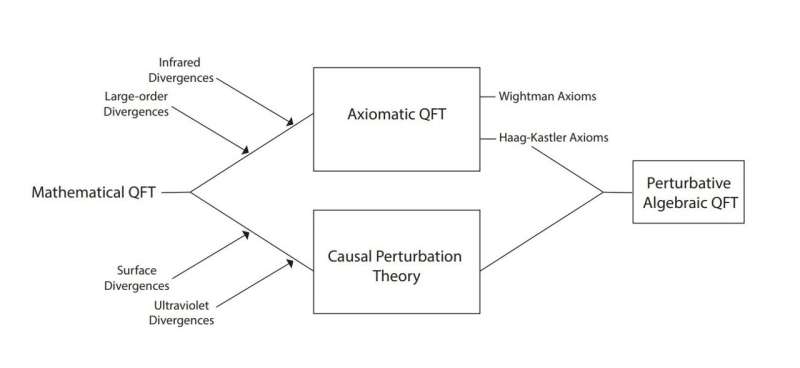This article has been reviewed according to Science X's editorial process and policies. Editors have highlighted the following attributes while ensuring the content's credibility:
fact-checked
trusted source
proofread
Tracing the history of perturbative expansion in quantum field theory

Perturbative expansion is a valuable mathematical technique which is widely used to break down descriptions of complex quantum systems into simpler, more manageable parts. Perhaps most importantly, it has enabled the development of quantum field theory (QFT): a theoretical framework that combines principles from classical, quantum, and relativistic physics, and serves as the foundation of the Standard Model of particle physics.
Yet despite its importance in shaping our understanding of the universe, the role of perturbative expansion has often been understated when discussing the mathematical and philosophical foundations of QFT. Through new analysis published in EPJ H, James Fraser at the University of Wuppertal, together with Kasia Rejzner at the University of York, bring the special status of perturbative expansions into sharper focus, by highlighting their deep-rooted relationship with the foundations of QFT.
The findings are published in The European Physical Journal H.
In fundamental physics, perturbative expansion is used extensively to extract accurate experimental predictions from QFT, which have gone on to shape the theory to its current form. All the same, the simplified descriptions offered by the technique have widely been viewed as irrelevant when discussing the mathematical and philosophical framework of the theory.
In contrast, Fraser and Rejzner argue that the mathematics of perturbative expansion has played a central role in the development QFT: often engaging directly with its foundational mathematical structure. Because of this, its importance cannot be understated when discussing the fundamental nature of the universe through QFT.
Through their paper, the duo brings the history of this relationship into sharper focus; tracing the history of the use of perturbative expansion in foundational developments in QFT. Their work could ultimately help physicists gain a deeper understanding of the implications of theories they have developed using perturbative expansion.
More information: James D. Fraser et al, Perturbative expansions and the foundations of quantum field theory, The European Physical Journal H (2024). DOI: 10.1140/epjh/s13129-024-00075-6
Provided by SciencePOD





















